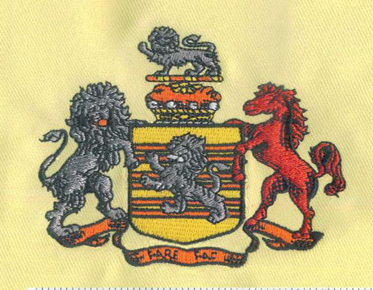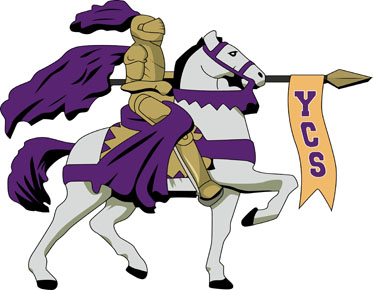What Is Embroidery Backing & Why Do You Need It?
Embroidering a fabric is not difficult
if you have the right tools. The first thing you need is an embroidered
backing, which helps the stitches stay firm and neat on your fabric. That
quality will make your embroidery work look better, no matter what it is. The
following content also has some reference value for Eagle digitizing.
What is an embroidered backing
The embroidered backing is also known
as the stabilizer. It is a special fabric, which is laid on the fabric being embroidered
to ensure that the embroidery stitch has a good foundation. It can be seen that
the embroidery is correctly placed on the clothing or fabric.
Embroidery backing types available for
embroidery
1. Tear away backing
Tearing back lining is a kind of
embroidery back lining. Once the embroidery is completed, it can be easily torn
from the fabric. This backing is available in heavy and light duty.
This ensures that you can get the
correct backing for your fabric. The lightweight backing is suitable for
lightweight fabrics, while the heavyweight backing is suitable for thicker
fabrics.
As the name implies, after the
embroidery is completed, the backing is torn from the fabric. You can use
scissors or your hands to remove the backing without damaging the embroidery.
2. wash away backing
As the name implies, a washable
backing is an embroidery backing that is removed from the fabric by washing. To
use this backing, you need to fix the backing to the back of the fabric being
embroidered using daubing stitches.
After embroidery, you can remove the
backing by removing the smeared stitch and then running warm water on the
fabric until the backing is completely washed off.
3. Cut away backing
The cut backing is an embroidered
backing that needs to be cut off from the fabric after completion. As the name
implies, it is easy to cut the backing from the fabric with scissors.
The cut backing where the embroidery
design is located is permanently left on the fabric or garment. Then use
scissors to cut off the excess.
4. Water soluble backing
Water soluble backing is a water
soluble embroidery backing. This is how the embroidery process is removed from
the fabric or garment.
It is most suitable for fabrics such
as wool or terry cloth. Usually, during the embroidery process, the
water-soluble backing is placed on the front of the fabric.
5. Fusible backing
Fusible embroidery backing is an
embroidery backing, which is fixed to the fabric you want to embroider by
heating. You can iron it onto the fabric to blend it into the fabric in the
fastest way.
The only problem with fusible backing
is that once the embroidery process is completed, it is difficult to remove it
from the fabric
6. Hat backing
The hat back lining is used for
embroidery hats. The hat backing ensures that the fabric of the hat does not
accumulate in the embroidery machine. The hat has hard fabric. The use of
embroidery backing ensures that the embroidery machine works smoothly on the
fabric.
After the embroidery process is
completed, the hat backing can be easily removed from the hat. It is easy to
hoop and helps to maintain the proper cap structure during and after
embroidery.
How to purchase the right backing
1. The type of backing you need
Before purchasing embroidery backing,
the main factor you need to consider is the type of backing you need to use.
Different types of fabrics require different types of backing. Using the wrong
backing for a piece of fabric or clothing may cause your embroidery to go
wrong. This will damage your fabric.
Check the stretch of the fabric to
determine what type of backing you need. Embroidery backing is used to
stabilize the fabric to ensure correct embroidery completion.
2. Fabric weight
When you need to buy embroidery
backing, you need to consider the weight of the fabric to be embroidered. The
lighter the embroidery fabric, the heavier the embroidery backing you need.
3. Use of fabric
If you are embroidering fabrics or
clothing that will be used and washed regularly, you need to use a permanent
embroidery backing. Backing that is insoluble in or affected by water.
If you have light colored fabrics, you
need a backing that will not show through the fabric. Once you have finished
your embroidery, if you use a permanent backing, make sure it is light enough
not to be seen through the fabric.
4. Consider embroidery design
It is also important that you consider
the embroidery design to be embroidered on the fabric. If your embroidery
design has many stitches, you need a thick embroidery backing to ensure that
your embroidery design is properly fixed to the fabric or clothing.
5. Appearance
When choosing embroidery backing,
please consider the appearance of the fabric or clothing you want. If you want
to have heavy embroidery on your clothes, you need a heavy embroidery backing.
If you want to have an invisible
backing, you need to buy an invisible backing, which is invisible behind the
embroidery on your clothes.
6. Price
Embroidery backing is relatively
cheap. You can buy it in rolls or pieces for several coins. For large embroidery
projects, you need to purchase backing rolls. For smaller projects, you can
purchase smaller embroidery backing, which is sufficient to meet the size of
your project.
7. Washable
If you are using embroidered backing
for your clothes, make sure they are washable or dry cleanable. Washable
embroidery ensures that you can wash as many clothes as possible without
letting the embroidery backing wash, shrink or damage the clothes.
8. Anti perforation
When purchasing an embroidered
backing, be sure to choose a stable embroidered backing. Embroidery backing for
handling embroidery thread and needle. An embroidery backing, which is not easy
to be pierced by embroidery needles.
9. Texture or feel
Most embroidery backing feels smooth.
Other heavier backing may feel heavy when touched. Since most of the backing is
inside the garment, it needs to be smooth.
When the backing touches a part of the
body, it should be soft, not rough. Choose a smooth backing for all your
embroidery items.
Benefits of using embroidered backing
Many embroiderers use embroidery
backing in many of their projects. There are many advantages to using an
embroidered backing.
First, the use of an embroidered
backing ensures that the embroidery design does not wrinkle when stitched.
Embroidery backing ensures that your embroidery process goes smoothly and the
results are attractive.
Secondly, the embroidery backing
allows the embroidery to be permanently fixed to the sewn fabric.
Another advantage of the embroidery
backing is that it can be easily removed after the embroidery process is
completed. Different types of embroidery backing can be removed in different
ways, from tearing to dissolving in water.
Can you do without hoop embroidery?
Many embroiderers like to use hoop
embroidery. Hoops are used to stabilize and secure fabrics or clothing for
embroidery. If you are embroidering, you use a hoop to ensure that your fabric
stays in place. If you can use anything else to stabilize your fabric or
embroidered clothing, then you don't need hoops. This means that if you want,
you can embroider without a hoop.
The most common method of hoop free
embroidery is to use your hand. You can hold and pull the fabric with one hand
while sewing with the other hand. Manual embroidery requires a lot of practice
to be correct. You can also use rolled fabrics. It is a hands-free tool that
allows you to perform embroidery correctly and perfectly without a hoop.


